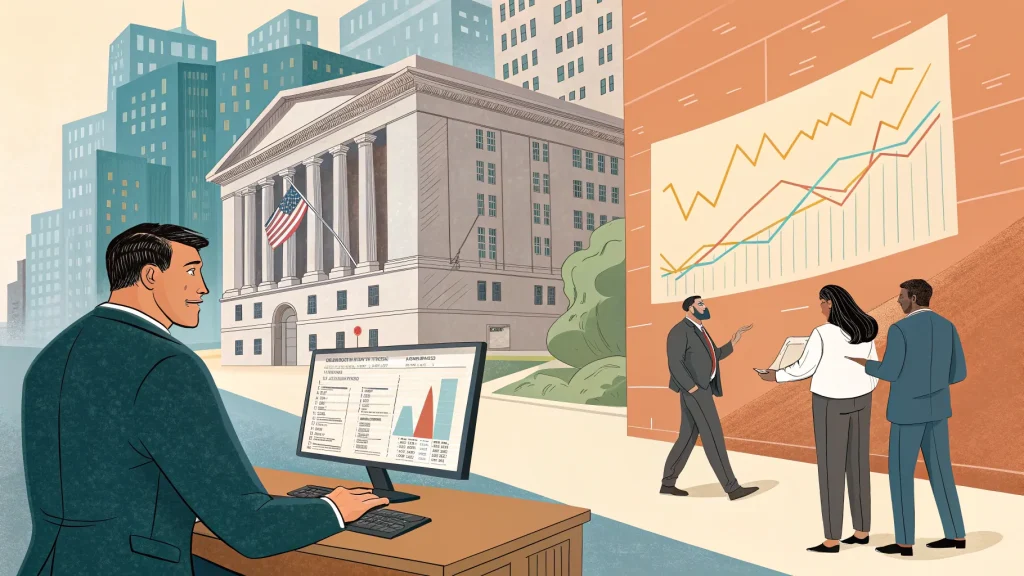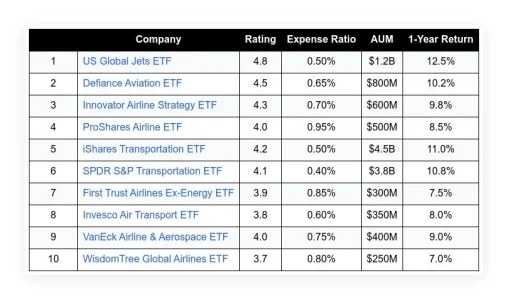This week brings an unusual trio of market movers. We face a wave of mega-cap earnings, a key read on consumer mood, and a rate decision from the Federal Reserve. Each one can sway stocks, bonds, and expectations for growth. Together, they form a stress test for the economy and the rally that has leaned on tech and optimism.
“Earnings, consumer confidence, and the Fed, get your damn popcorn ready.”
I am Taylor Sohns, CEO of LifeGoal Wealth Advisors, a CIMA and CFP. I spend my days weighing data and behavior. This week calls for both. We will learn whether artificial intelligence spending can keep profits growing, whether households are showing strain, and why the Fed is cutting rates while inflation runs hot. These events do not happen in a vacuum. They interact with risk appetite, credit conditions, and the story investors tell themselves.
Table of Contents
ToggleThe Earnings Gauntlet: Tech’s AI Bill Comes Due
Five giants step up: Apple, Amazon, Meta, Microsoft, and Google’s parent, Alphabet. These firms drive indexes, budgets, and headlines. Their results shape how investors view the economy. In recent quarters, the promise of AI has fueled heavy spending on data centers, chips, and cloud tools. The question now is simple. Are the dollars going in producing dollars coming out?
AI capital spending has been massive. Think multibillion-dollar outlays for GPUs, power, networking, and real estate. Cloud providers have led that charge. The payoff needs to show up in revenue growth, usage metrics, and margin trends. If customers are testing tools but not scaling them, returns will lag expenses. If deployments are sticky and broad, we could see a second leg of growth across software, cloud, and digital ads.
Investors will look for several signals:
- Is AI revenue showing up in reported segments or only in forward-looking commentary?
- Are cloud growth rates reaccelerating or flattening?
- Are gross margins stable despite higher infrastructure costs?
- Is enterprise demand holding under tighter budgets?
Guidance matters as much as the print. Management teams must balance excitement with discipline. Investors want proof of adoption, not only demos. They also want to know whether spending will stay at this pace. Tightening the belt after a surge in capex can boost free cash flow. Keeping the foot on the gas can strain patience if earnings lag.
Let’s tackle the quiz I posed. Which of these mega-cap names has been a rough hold over the past five years compared with the S&P 500? The answer is Amazon. The others have outpaced the index. Over the same period, the S&P has produced stronger gains than Amazon. That period lines up with Jeff Bezos stepping down as CEO. It does not mean the business is broken. It does show how entry points and leadership shifts can shape returns. The market priced huge growth into Amazon a few years back. Coming off that peak, results had to be near perfect to keep up.
Market breadth ties into this. If these leaders deliver strong numbers and credible outlooks, the rally can broaden. If they miss, the index could wobble. Concentration risk cuts both ways. Good news lifts indexes faster. Bad news weighs heavier.
View this post on Instagram
Consumer Confidence: Do Attitudes Predict Action?
Consumer confidence is expected near a five-year low. That sounds alarming. But surveys and spending can diverge. People may feel worse yet keep spending. Or they may report feeling fine but pull back on big-ticket items. Which signal should we trust?
I put more weight on what people do with their dollars than what they say on a survey. Retail sales, card data, and airline bookings show behavior. Confidence reports, like those from The Conference Board, give useful color. They can warn us when households feel pinched by prices, rent, child care, or debt. Still, the stock market is where people vote with their money. That vote matters most.
Why might confidence be soft? Inflation may have cooled from its peak, but prices are still higher than a few years ago. That strains budgets even when wage growth helps. Interest costs have climbed for mortgages, cars, and credit cards. Delinquencies have ticked up from very low levels. Student loan payments returned for many borrowers. These pressures can chip away at sentiment.
Yet travel and entertainment have stayed resilient in many datasets. The split between “experiences” and “goods” continues. Households have favored services and trips over furniture and gadgets. If confidence weakens further, discretionary spending could wobble. That would hit retail, travel, and ad-driven firms. If confidence stabilizes, the soft patch may pass with little damage.
What I will watch:
- Whether sentiment drops are concentrated in lower-income groups.
- Whether job confidence holds despite layoff headlines.
- Whether intentions to buy homes or cars improve with lower rates.
Confidence can set the tone for the holiday season and tax-refund period. It also works through corporate planning. If CEOs hear customer caution, they may trim hiring or inventories. That feedback loop can slow growth even without a formal shock.
Fed Day: Cutting Rates While Inflation Rises
The Fed is expected to cut the policy rate by 0.25 percentage points. Then Chair Jerome Powell will face the hard part. He must explain why easing is appropriate while inflation has accelerated for five straight months. That is not a comfortable setup.
There are several reasons the Fed might cut in this environment:
- Growth has cooled at the margin, and the Fed wants to support it.
- Real rates may be very restrictive given recent inflation trends.
- Credit conditions have tightened for smaller firms and households.
- Risk management: move early and lightly rather than later and hard.
Powell will likely stress that policy is still tight even after a small cut. He may point to the full rate path, not one move. Look for comments on the labor market, wage growth, and shelter inflation. He will also face questions about the balance sheet. Quantitative tightening changes liquidity. Markets care about the speed of runoff and any hint of a pause.
The tricky part is credibility. If inflation quickens while the Fed is easing, investors may fear it is behind the curve. That can push long-term yields higher. It can also weaken the dollar and lift commodities. On the flip side, if growth is slowing and the Fed fails to adjust, the economy could stumble. A mild cut with a firm message might aim for a middle path.
Here is how different assets could react:
- Stocks: A cut with a steady inflation message could help cyclicals and small caps. A hawkish tone could favor cash-generative tech over high-beta names.
- Bonds: A surprise hawkish cut could flatten the curve. A dovish cut could steepen it if long-run inflation fears grow.
- Dollar and gold: A softer policy path may weaken the dollar and support gold. A firm stance on inflation could reverse that.
My focus will be on the press conference. Words move markets more than the statement. If Powell ties cuts to an easing in core inflation ahead, that is calming. If he emphasizes growth risks over price stability, expect more volatility.
How These Three Threads Tie Together
Earnings set the micro backdrop. Confidence sets the consumer backdrop. The Fed sets the policy backdrop. They merge into a simple question. Is growth durable enough to absorb high prices and tighter money, or do we need help from policy and productivity?
If mega-cap results show strong demand and improving margins, stocks have support. If confidence steadies and spending holds, earnings forecasts stand a better chance. If the Fed can ease without spooking inflation expectations, financial conditions can relax. That is the “soft-ish landing” script many hope to see.
What could go wrong? Misses from the largest firms would challenge index-level gains. A sharp drop in confidence would warn of a pullback in services. A policy message that looks reactive rather than steady could unsettle bonds. On the other hand, a decent earnings season, stable household behavior, and a cautious Fed would keep the expansion on track.
Risk management matters. Diversification is not exciting, but it helps when single events hit harder than usual. Cash flow quality, balance sheets, and valuation discipline matter too. The last few years rewarded patience and flexibility. This week asks for the same.
What I Will Watch In Real Time
Here is my simple dashboard for the week:
- Revenue and margin detail on AI-related offerings from Microsoft, Alphabet, and Amazon Web Services.
- Apple’s performance in services and any hints on device replacement cycles.
- Meta’s ad pricing and spending outlook, especially on efficiency gains from AI.
- Conference Board confidence sub-index for “jobs plentiful” versus “jobs hard to get.”
- Fed’s characterization of inflation drivers: shelter, services ex-shelter, and goods.
- Market reaction across two days, not just the first 30 minutes.
“Which one of these stocks has been a brutal investment the past five years? … Amazon.”
That line is a reminder. Even great companies can lag for long stretches. Entry price and expectations drive returns. The flip side is also true. Weak businesses can pop for months on a new story. Use data. Set rules. Avoid chasing yesterday’s winner or fleeing in panic after a headline.
This week will not settle every debate. It will, however, give us fresh proof points. I will look for consistency across earnings calls, consumer measures, and Fed messaging. If the signals rhyme, we can act with more confidence. If they clash, we stay humble and wait for better odds.
Stay patient, stay diversified, and let the numbers guide you. If AI spending shows real payoffs, households keep spending within their means, and the Fed threads the needle, markets can digest a lot. If not, the playbook shifts to defense. Either way, preparation beats prediction.

















